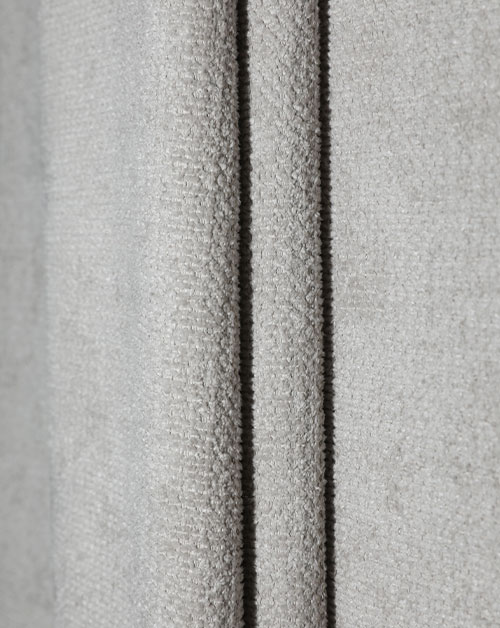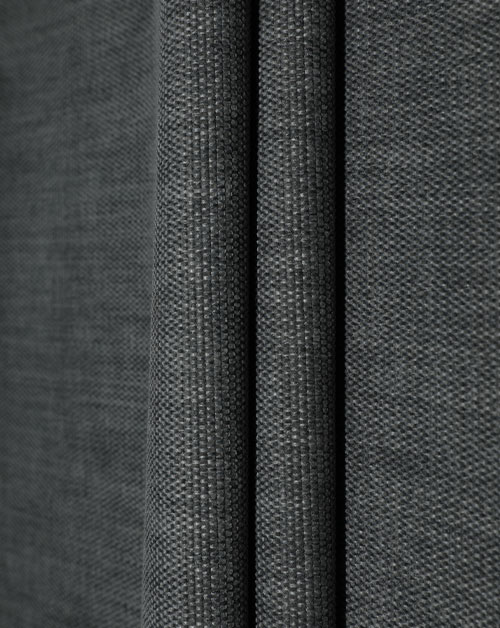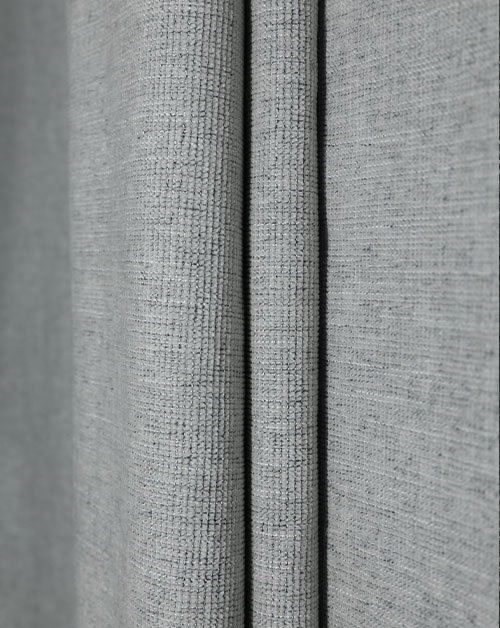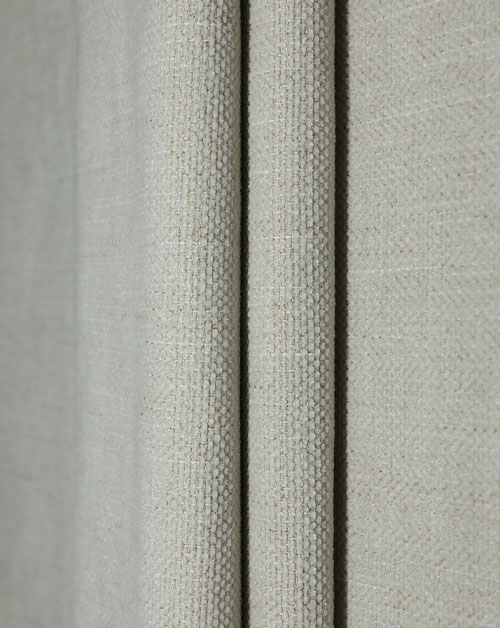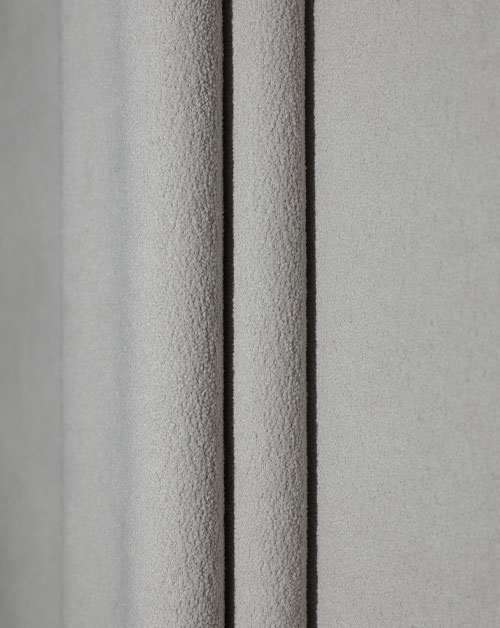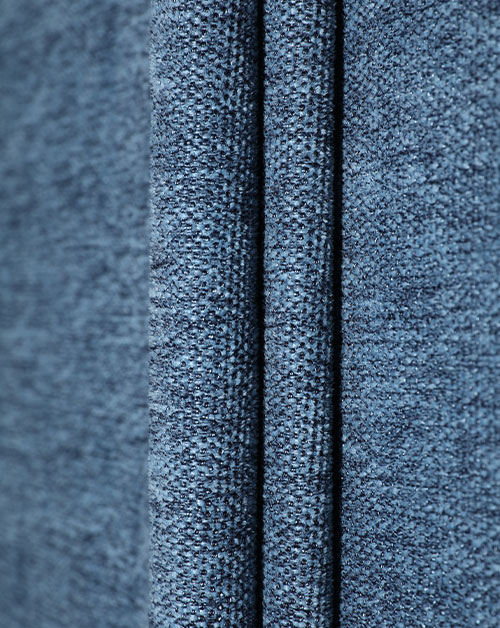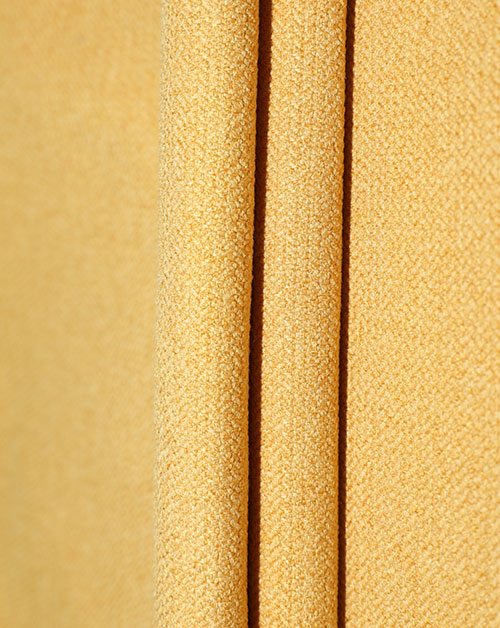Driven by the dual promotion of consumption upgrading and technological progress, people's expectations for home life are no longer limited to "beauty" and "comfort", but are turning to a more intelligent, healthy and environmentally friendly direction. The emergence of functional fabrics meets this trend. It not only changes the single attribute of traditional home fabric materials, but also promotes soft furnishing design to move towards "multifunctional integration". In core home furnishings such as sofas, curtains, wall cloths, and tablecloths, functional fabrics are becoming a key force in improving the quality of space.
Anti-fouling and easy to clean: Put on a "lazy coat" for the sofa
The sofa is one of the most frequently used furniture in the family space, but the traditional fabric sofa has the problem of being easy to get dirty and difficult to clean, which has become a "cleaning pain point" for many families. The rise of functional sofa fabrics has effectively solved this problem. Through nano-coating technology, molecular protection treatment and other methods, the sofa fabric has excellent anti-fouling and waterproof properties. Even if red wine or coffee is spilled on its surface, it can be easily wiped without penetration or residue. This "visualization" technical advantage makes functional fabrics popular in families with children and pets, and also makes "lazy home" a reality.
More importantly, this type of fabric often has good wear resistance and anti-pilling properties, which prolongs the service life of the sofa, and ensures the long-term stability of the appearance texture while meeting the functionality.

Multi-effect curtains: light, temperature and noise regulators
Curtains are no longer just shading or decoration, they are quietly becoming regulators of smart space environments. Functional curtain fabrics can achieve different levels of shading effects from 60% to 100% through multi-layer weaving or high-density coating, while effectively blocking ultraviolet rays, protecting indoor furniture from fading and reducing heat radiation. This performance is particularly important for spaces such as audio-visual rooms and bedrooms, which can bring a better light control experience.
Flame retardant and antibacterial: Building a home defense line for health and safety
With the improvement of safety awareness, home soft furnishings have put forward higher requirements for the fire resistance of fabrics. Functional Fabric uses flame-retardant fibers or post-processed flame-retardant finishing to prevent it from burning rapidly when exposed to open flames. It has a slow burning rate, no dripping, and low smoke, effectively delaying the spread of fire. This performance has become an important consideration for material selection in high-rise residential buildings, apartments, hotels, nursing homes and other places.
On the other hand, antibacterial function has also become an indispensable indicator for the new generation of fabrics. Especially in humid areas, kitchens or bathrooms, fabrics are prone to mold and bacteria, causing odor or health hazards. Functional fabrics can effectively inhibit bacterial reproduction, keep fabrics clean, and improve the hygiene level of the space by adding natural antibacterial agents such as silver ions, chitosan, and bamboo charcoal powder. This is especially important in families with infants or pets.
Compatibility of function and aesthetics: a new "source of inspiration" for designers
Functional home fabrics have not sacrificed aesthetics due to "technical attributes". On the contrary, it is becoming a new material library for designers to pursue "technological beauty". The development of modern technology has made functional fabrics no longer limited to a single material and color, but presents a rich texture, pattern, touch and visual performance. Various texture treatments such as linen, suede, and imitation leather make functional sofa fabrics and curtain fabrics perfectly integrated into various styles of space, from simple modern to French romantic, from minimalist black and white to retro dark green.
This property of compatibility between function and aesthetics has promoted functional fabrics from engineering projects to exquisite homes, becoming a new trend that cannot be ignored in the soft furnishing industry.
Functional innovation under the concept of sustainability
The future of functional fabrics is not only about "what can be done", but also about "being more environmentally friendly". Against the background of the increasing popularity of the concept of green development around the world, many home fabric companies have begun to develop fluorine-free waterproof and anti-fouling technology, biodegradable coatings, and new environmentally friendly raw materials using recycled PET fibers and natural dyes. This not only meets the new generation of consumers' pursuit of environmental protection and health, but also provides a sustainable path for the long-term development of functional fabrics.
From anti-fouling, flame retardant, antibacterial to shading, noise reduction, and intelligent response, functional fabrics are bringing unprecedented experience innovation to home life. It is no longer just a part of "soft decoration", but a carrier of "soft functions", which makes the sofa not afraid of stains, the curtains know how to dim, the pillows more hygienic, and the space quieter, truly giving fabric materials the ability to "understand life".

 English
English 中文简体
中文简体 русский
русский عربى
عربى